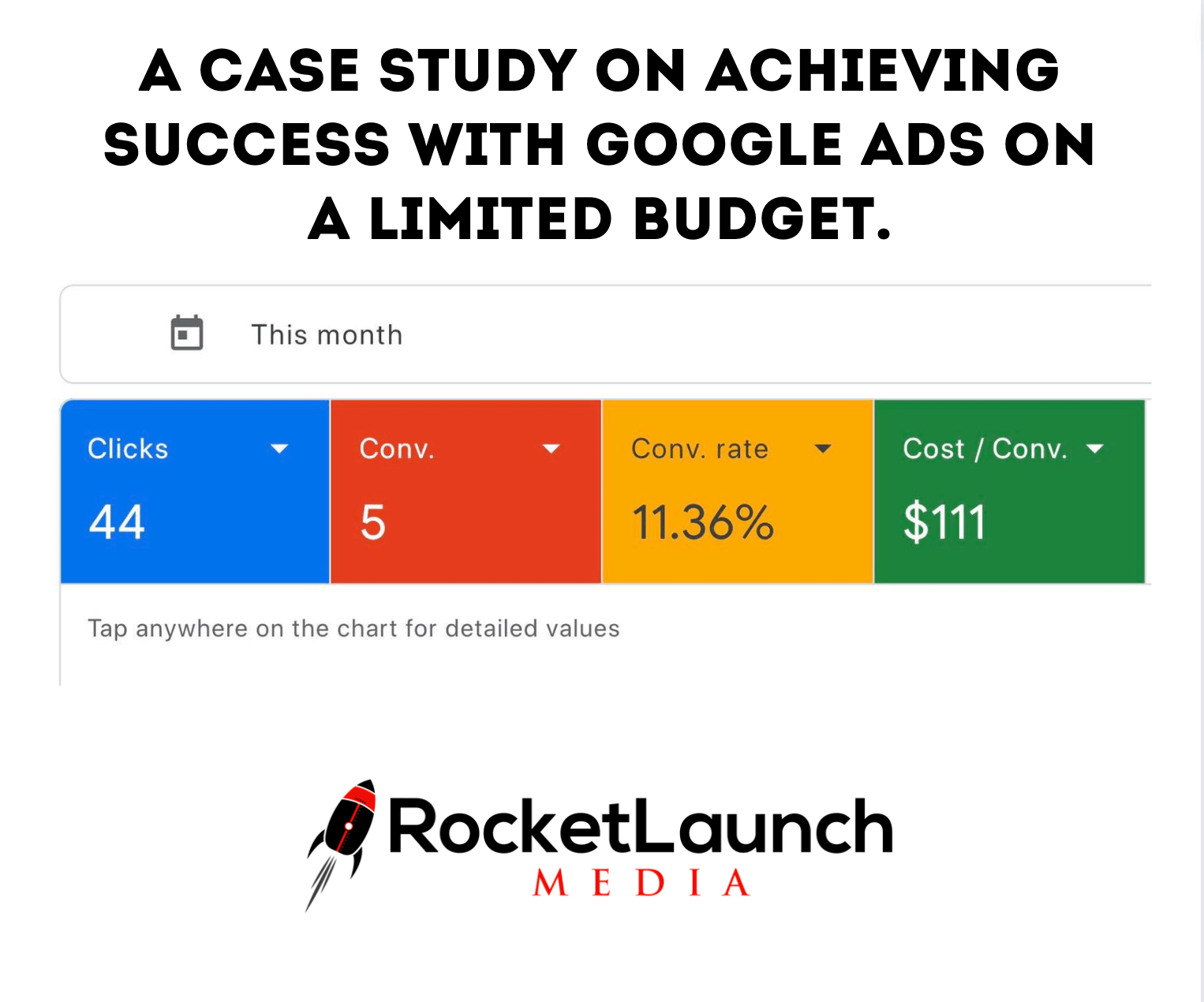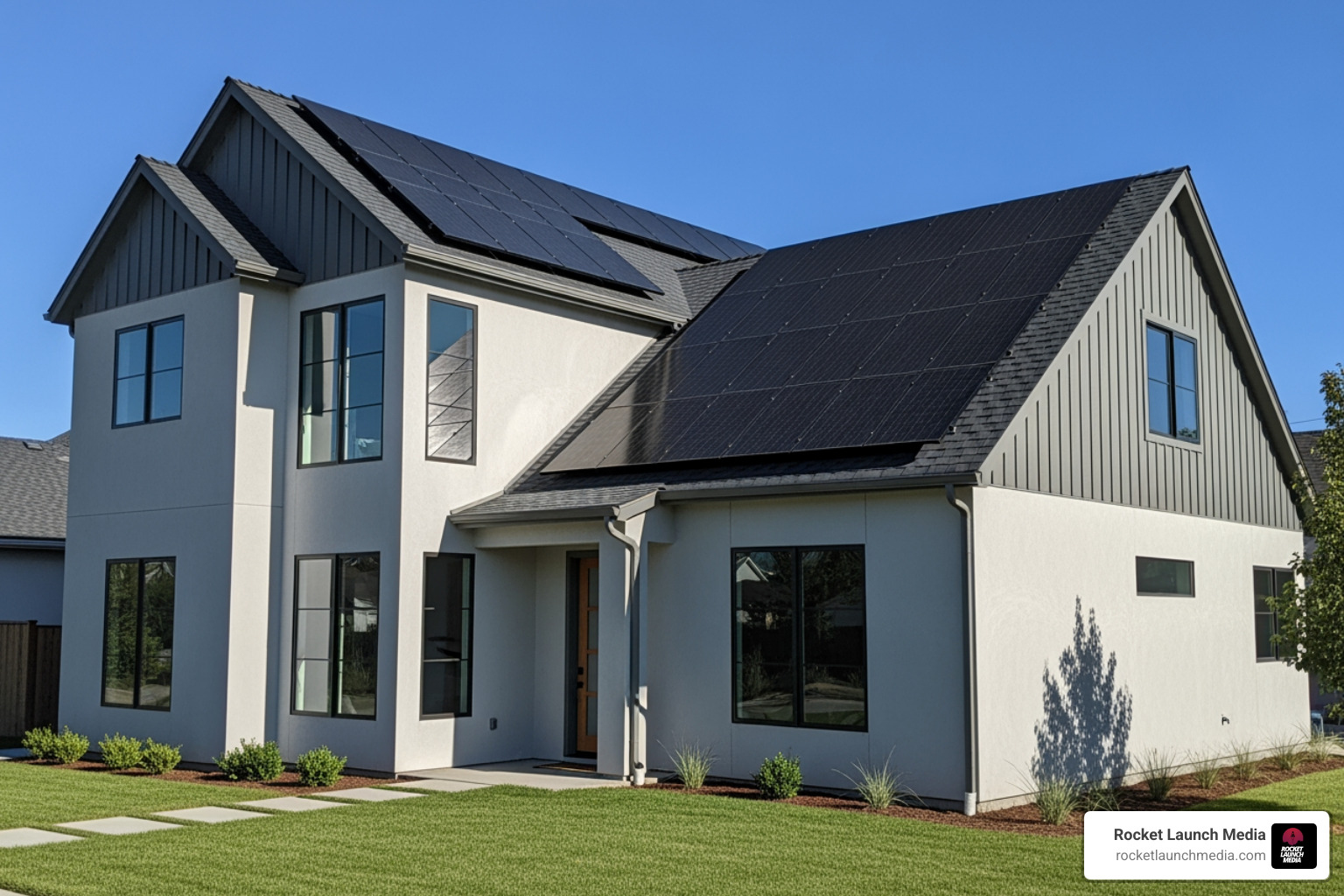How to Become a Google Ads Expert for Contractors, Starting from Scratch
Google ads for contractors are a game changer. They help boost your visibility online and attract more clients. Here’s a quick way to leverage Google Ads for your contracting business:
- Setup Your Campaign: Visit ads.google.com and create an account.
- Choose Keywords: Focus on specific services you offer, like “roof repair” or “home renovation.”
- Ad Extensions: Use site links, callouts, and structured snippets to offer more value.
- Monitor and Optimize: Regularly review performance and adjust bids to optimize your budget.
Having a robust online presence is essential for any business, especially for contractors. Whether you’re a roofer, plumber, or general handyman, your potential clients are searching online. Leveraging powerful tools like Google Ads can ensure your services appear at the top of search engine results pages (SERPs) when clients need you the most.
What are the benefits? Google Ads allow you to:
- Target Clients Searching for Your Services: Ensure you’re reaching potential clients ready to hire.
- Improve Visibility: Stand out in a crowded market and get noticed.
- Control Your Budget: Pay-per-click (PPC) means you only pay when someone clicks on your ad.
My name is Ahmed Elmahdy, the founder and CEO of Rocket Launch Media. With over a decade of experience, I’ve helped countless contractors master the art of Google ads for contractors and significantly increase their revenue.

Google ads for contractors word roundup:
Understanding Google Ads Basics
What are Google Ads?
Google Ads are text advertisements that appear at the top and bottom of Google search results pages (SERPs). These ads help businesses, including contractors, reach potential clients actively searching for their services.
Cost-per-click (CPC) is the pricing model for Google Ads. You pay every time someone clicks on your ad. CPC can range from as low as $0.01 to over $10 per click, depending on factors like keyword competition and your maximum bid.
How Google Ads Work
Google Ads operate on a pay-per-click (PPC) model. This means you only pay when someone clicks on your ad. Here’s how the system works:
- Keyword Selection: Choose keywords relevant to your services, like “roof repair” or “home renovation.”
- Bidding System: Set a maximum bid for each keyword. Your bid, along with the ad’s relevance, determines its placement.
- Ad Placement: Ads appear on the SERPs. The more you’re willing to pay per click, the higher your ad will appear.
Paid Search vs. Organic Search
Paid search results are ads you pay for, while organic search results are unpaid listings determined by search engine optimization (SEO). Paid search offers immediate visibility, whereas organic search builds over time.
Google Ads Account Setup
To get started with Google Ads, visit ads.google.com. Here’s a quick setup guide:
- Create an Account: Provide basic business information and set up a payment method.
- Choose Campaign Objectives: Options include sales, leads, or website traffic.
- Set Your Budget: Determine how much you’re willing to spend daily or monthly.
The Bidding System
Google Ads uses an auction system to determine ad placement. Your maximum bid and ad quality (relevance and performance) influence your ad’s position. The higher your bid and quality score, the better your ad placement.
Keyword Selection
Effective keyword selection is crucial. Use tools like Google Keyword Planner, SEMrush, and Spyfu to find high-performing keywords. Focus on:
- Primary Keywords: Broad terms like “home renovation.”
- Long-Tail Keywords: Specific phrases like “affordable home renovation in Austin.”
Ad Placement
Your ad’s position on the SERPs is determined by your bid and quality score. Ads can appear at the top, middle, or bottom of the page. Higher bids and quality scores result in better placement, increasing your chances of getting clicked.
Understanding these basics can help you create effective Google ads for contractors. Next, we’ll discuss how to set up your first Google Ads campaign, including choosing campaign objectives and setting your budget.
Setting Up Your First Google Ads Campaign
Choosing Campaign Objectives
When starting with Google Ads for contractors, the first step is choosing the right campaign objective. Google Ads offers several objectives, but the most relevant for contractors are:
- Sales: Ideal for contractors looking to convert site visits into direct sales.
- Leads: Useful for generating inquiries or consultation requests.
- Website Traffic: Best for increasing the number of visitors to your website.
Choosing the correct objective helps Google tailor your ad campaign to meet those specific goals. For example, if you select “sales,” Google will focus on showing your ads to users who are more likely to make a purchase.
Keyword Research and Selection
Effective keyword selection is the backbone of a successful Google Ads campaign. Here’s a step-by-step guide:
Brainstorm Keywords: Think about what potential clients might search when looking for your services. For example, “custom home builders” or “roof repair near me.”
Use Google Keyword Planner: This tool helps you find keywords with high search volumes and provides insights into how competitive they are.
Leverage Keyword Research Tools: Tools like Ahrefs and Moz offer detailed analyses of keyword performance and competitor strategies. Ahrefs can show you the top-performing keywords, while Moz reveals the keywords your competitors are using.
Focus on Long-Tail Keywords: Long-tail keywords are more specific phrases like “affordable kitchen remodeling in Denver.” They usually have lower search volumes but higher conversion rates.
Analyze Competitors: Use tools like Ahrefs and Moz to understand the keywords your competitors are targeting. This can help you identify gaps and opportunities in your own strategy.
Crafting Effective Ad Copy
Your ad copy is your first impression. It needs to be compelling and relevant to attract clicks. Here are some tips:
Attention-Grabbing Headlines
Your headline is the first thing potential clients see. Make it catchy and informative. For example, “Top-Rated Roof Repair Services” or “Affordable Custom Home Builders.”
Highlight Unique Selling Points (USPs)
What sets you apart from the competition? Whether it’s your years of experience, quality of work, or competitive pricing, make sure to highlight these USPs in your ad copy.
Strong Call-to-Actions (CTAs)
A strong CTA encourages users to take action. Phrases like “Call Now for a Free Quote” or “Schedule Your Consultation Today” are effective.
A/B Testing
Create two versions of your ad with slight variations to see which performs better. This is known as A/B testing and can help refine your ad copy for better results.
Setting Your Budget
Your budget determines how often your ads are shown. Start with a modest daily budget and adjust based on performance. Google Ads allows you to set a daily or monthly budget, ensuring you never spend more than you’re comfortable with.
Cost-Per-Click (CPC)
With Google Ads, you pay each time someone clicks on your ad. CPC can range from $0.01 to over $10 per click, depending on factors like keyword competition and your maximum bid.
Maximizing ROI
To maximize your return on investment (ROI), focus on high-performing keywords and continually refine your ad copy and bidding strategy. Tools like Google Analytics and Ahrefs can help you track performance and make data-driven decisions.
By following these steps, you’ll be well on your way to creating effective Google ads for contractors. Next, we’ll discuss how to optimize your campaign for even better results, including using ad extensions and creating optimized landing pages.
Optimizing Your Google Ads Campaign
Once you’ve set up your Google Ads campaign, the next step is to optimize it for better performance. This involves using ad extensions, creating optimized landing pages, and leveraging geo-targeting and ad scheduling. Let’s explore each of these aspects.
Using Ad Extensions
Ad extensions are additional pieces of information that expand your ad and provide more value to potential clients. They can significantly improve your ad’s visibility and click-through rate (CTR).
Site Links
Site links are additional links that appear below your ad, directing users to specific pages on your website. For example, if you’re a contractor offering multiple services, you can create site links for “Roof Repair,” “Kitchen Remodeling,” and “Home Additions.”
Benefits:
- Increases Clicks: More links mean more opportunities for users to click.
- Improves Navigation: Helps users find what they’re looking for directly from the ad.
Callouts
Callouts are short snippets of text that highlight specific features or benefits of your service. For example, you can use callouts like “Free Estimates,” “24/7 Emergency Service,” or “Licensed and Insured.”
Benefits:
- Adds Value: Provides additional information that can sway potential clients.
- Catches Attention: Highlights unique selling points quickly.
Structured Snippets
Structured snippets provide more detailed information about your services, such as the types of services you offer or the areas you serve. Unlike site links, structured snippets are not clickable.
Benefits:
- Improves Detail: Gives users a clearer idea of what you offer.
- Builds Trust: More information can make your ad appear more trustworthy.
By using ad extensions effectively, you can make your ads more engaging and informative, leading to higher CTRs and conversion rates.
Creating Optimized Landing Pages
A well-optimized landing page is crucial for converting clicks into actual leads or sales. Here are some key elements to focus on:
Relevant Content
Make sure your landing page content is highly relevant to the ad. If your ad is about “Roof Repair Services,” the landing page should provide detailed information about your roofing services, including types of repairs, materials used, and customer testimonials.
Clear CTAs
A call-to-action (CTA) is essential for guiding visitors toward taking the desired action. Use clear and compelling CTAs like “Get a Free Estimate,” “Call Now,” or “Book an Appointment.” Ensure they are prominently placed on the page.
User-Friendly Design
Your landing page should be easy to steer. Use a clean layout, high-quality images, and concise text. Make sure it loads quickly and is mobile-friendly, as many users will access it from their phones.
By focusing on these elements, you can create landing pages that not only attract visitors but also convert them into clients.
Geo-Targeting and Ad Scheduling
Two critical tactics to improve your Google Ads campaign are geo-targeting and ad scheduling.
Geo-Targeting
Geo-targeting allows you to show your ads to users in specific geographic areas. For example, if you’re a contractor in Boston, you can target your ads to people searching for services in and around Boston.
Benefits:
- Relevance: Ensures your ads are seen by people who can actually hire you.
- Cost-Effective: Avoids wasting budget on irrelevant clicks.
Ad Scheduling
Ad scheduling lets you choose the best times to display your ads. For example, if you find that most of your clients search for services in the early morning and late afternoon, you can schedule your ads to appear during these high-traffic times.
Benefits:
- Maximizes Impact: Shows your ads when potential clients are most likely to be searching.
- Efficient Spend: Ensures your budget is used effectively.
By combining geo-targeting and ad scheduling, you can make sure your ads reach the right people at the right times, maximizing your chances of generating leads.

In the next section, we’ll explore advanced strategies for Google Ads success, including tracking and analytics, retargeting campaigns, and competitor analysis.
Advanced Strategies for Google Ads Success
Tracking and Analytics
Tracking and analytics are crucial for understanding how well your Google Ads campaigns are performing. Without proper tracking, you can’t know what’s working and what’s not.
Conversion Tracking: This tells you what happens after a user clicks on your ad. Did they fill out a form? Call your business? Purchase a service? Conversion tracking helps you measure these actions.
Benefits:
- Measure Success: Know which ads are driving leads or sales.
- Optimize Campaigns: Adjust your strategies based on what’s working.
Google Analytics: Integrate Google Analytics with your Google Ads account. This tool provides detailed insights into user behavior on your website. You can track metrics like bounce rate, average session duration, and pages per session.
Benefits:
- Understand User Behavior: See how users interact with your site after clicking on your ad.
- Improve User Experience: Identify areas for improvement on your landing pages.
Performance Metrics: Keep an eye on key metrics like clicks, impressions, click-through rates (CTR), and conversion rates. High CTRs and conversion rates indicate effective ads.
Benefits:
- Identify Winners: Focus on high-performing keywords and ads.
- Adjust Budget: Allocate more budget to successful campaigns.
Retargeting Campaigns
Retargeting is a powerful way to re-engage visitors who have shown interest in your services but haven’t converted yet. It involves showing personalized ads to users who have visited your website.
Re-engaging Visitors: Retargeting reminds potential clients about your services. For example, if someone visited your site looking for roofing services but didn’t contact you, retargeting can show them ads about your roofing expertise.
Benefits:
- Increase Conversions: Bring back interested visitors who are more likely to convert.
- Lower Costs: Retargeted ads often have a lower cost per conversion.
Personalized Ads: Create customized ads based on the pages users visited. If someone looked at your foundation repair services, show them ads specific to foundation repair.
Benefits:
- Higher Relevance: Personalized ads are more likely to catch the user’s attention.
- Build Trust: Show potential clients you understand their needs.
Competitor Analysis
Knowing what your competitors are doing can give you a significant edge. Competitor analysis helps you understand their strategies and find opportunities to improve your own.
Analyzing Competitor Keywords: Use tools like SEMrush or Spyfu to see which keywords your competitors are targeting. This can help you find high-performing keywords you might have missed.
Benefits:
- Find Opportunities: Identify keywords that can drive more traffic.
- Stay Competitive: Ensure you’re not missing out on valuable search terms.
Adjusting Bids: If you notice competitors are bidding high on certain keywords, consider adjusting your bids accordingly. You might need to increase your bid to stay competitive or find less expensive alternatives.
Benefits:
- Optimize Spend: Use your budget more effectively by focusing on the right keywords.
- Improve Ad Visibility: Ensure your ads appear prominently in search results.
Improving Ad Visibility: Look at the types of ads your competitors are running. Are they using specific ad extensions or unique selling points? Use this information to improve your own ads.
Benefits:
- Stand Out: Make your ads more appealing than your competitors’.
- Increase Clicks: Higher-quality ads can lead to more clicks and conversions.
By leveraging these advanced strategies, you can take your Google ads for contractors to the next level. Tracking and analytics, retargeting, and competitor analysis are essential tools for optimizing your campaigns and maximizing your return on investment.
In the next section, we’ll discuss common mistakes to avoid, ensuring you get the most out of your Google Ads efforts.
Common Mistakes to Avoid
When running Google Ads for contractors, it’s easy to make mistakes that can waste your budget and lower your ad performance. Here are some common pitfalls and how to avoid them.
Geo-Targeting Errors
Geo-targeting is crucial for contractors who serve specific local areas. However, many make the mistake of not understanding it well enough.
Location-Specific Search Results: Google shows ads based on the searcher’s location. If you’re a contractor in Chicago, you want your ads to appear only to people in or near Chicago. Failing to set your location correctly means your ad could show up for someone in another state.
Excluding Irrelevant Areas: Make sure to exclude areas where you don’t provide services. If you only work in New York City, exclude neighboring states to avoid wasting your budget on clicks that won’t convert.
Example: A roofing contractor in Boston accidentally targeted the entire state of Massachusetts. They wasted money on clicks from areas they couldn’t serve. By fine-tuning their geo-targeting to only include Boston and nearby suburbs, they increased their conversion rate by 25%.
Irrelevant Keywords
Using the wrong keywords can drain your budget quickly.
Broad Keywords: Keywords like “landscape” or “construction” are too broad. They can attract clicks from people looking for information, not services. Use more specific keywords like “residential landscaping services” or “commercial construction in Chicago.”
Negative Keywords: Always use negative keywords to avoid irrelevant clicks. For example, if you’re a roofing contractor, you might want to add “DIY” or “roofing jobs” as negative keywords. This ensures your ad doesn’t show up for people looking to do it themselves or seeking employment.
Case Study: A landscape contractor targeted the keyword “landscape” and ended up paying for clicks from people looking for landscape design software. After adding “software” as a negative keyword, they saw a 30% reduction in wasted ad spend.
Inconsistent Messaging
Consistency is key when it comes to Google ads for contractors. Your ad copy should match the content on your landing page to provide a seamless experience for the user.
Matching Ad Copy with Landing Pages: If your ad promises “free estimates for kitchen remodeling,” make sure the landing page prominently features information about free estimates for kitchen remodeling. Inconsistent messaging can confuse visitors and increase bounce rates.
Maintaining Consistency: Keep your messaging consistent across all your ads and landing pages. This builds trust and makes it easier for potential clients to understand what you offer.
Example: A contractor ran an ad offering “20% off roofing services,” but the landing page didn’t mention the discount. They quickly updated the landing page to highlight the 20% discount, resulting in a 15% increase in conversions.
Summary
Avoiding these common mistakes can significantly improve your Google Ads for contractors. Proper geo-targeting, relevant keywords, and consistent messaging are essential for a successful campaign.
In the next section, we’ll answer some frequently asked questions about Google Ads for contractors, providing more insights to help you optimize your campaigns.
Frequently Asked Questions about Google Ads for Contractors
Are Google Ads worth it for contractors?
Absolutely. Google Ads can be a game-changer for contractors. They provide a way to reach potential clients actively searching for your services. Unlike traditional advertising, Google Ads target people who are already interested in what you offer.
Fact: According to industry experts, contractors using Google Ads often see a higher conversion rate compared to other forms of online marketing.
Case Study: ABC Roofing saw a 35% increase in website visits and a 20% increase in service inquiries after running a targeted Google Ads campaign. This demonstrates how effective Google Ads can be when done right.
What is the best form of advertising for contractors?
It depends. While Google Ads are highly effective, they should be part of a broader marketing strategy. Combining Google Ads with social media advertising, SEO, and content marketing can yield the best results.
Key Insight: Using a mix of advertising methods, including retargeting and email campaigns, can significantly improve your ROI.
Example: A contractor might use Google Ads to capture immediate leads and Facebook ads for retargeting, ensuring they stay top of mind for potential clients. This multi-channel approach can lead to higher conversion rates and better overall performance.
How much does it cost to hire an agency for Google Ads?
Varies widely. The cost to hire an agency can range from a few hundred to several thousand dollars per month, depending on the scope of work and the agency’s expertise.
Average Costs:
- Small Agencies: $500 – $1,500 per month
- Mid-Sized Agencies: $1,500 – $5,000 per month
- Large Agencies: $5,000+ per month
Quote: “It’s absolutely essential to ensure you’re making your money back from your Google Ads account.” This means tracking your ROI and making sure the investment in an agency pays off.
Tip: Before hiring an agency, ask about their experience with Google ads for contractors and request case studies or references to ensure they’re a good fit for your needs.
In the next section, we’ll dive into advanced strategies for Google Ads success, including tracking and analytics, retargeting, and competitor analysis.
Conclusion
In this guide, we’ve walked you through the essentials of Google Ads for contractors. Here’s a quick recap to ensure you have all the key points at your fingertips:
Understanding Google Ads Basics: We explained the PPC model, how Google Ads work, and the importance of keyword selection and ad placement.
Setting Up Your First Campaign: We covered everything from choosing campaign objectives to keyword research and crafting compelling ad copy.
Optimizing Your Campaign: We discussed using ad extensions, creating optimized landing pages, and leveraging geo-targeting and ad scheduling.
Advanced Strategies: We provided insights into tracking and analytics, retargeting campaigns, and competitor analysis.
Common Mistakes to Avoid: We highlighted the importance of geo-targeting accuracy, using relevant keywords, and maintaining consistent messaging.
By following these steps, you can create effective Google Ads campaigns that drive traffic, generate leads, and grow your contracting business.
Ready to take your advertising to the next level? At Rocket Launch Media, we specialize in helping contractors master Google Ads. Our unique approach and industry expertise ensure you get the best results.
Get in touch with us today to start your growth journey and see how we can help you achieve your marketing goals.
Thank you for reading, and we hope this guide has been helpful. If you have any questions or need further assistance, don’t hesitate to reach out.







